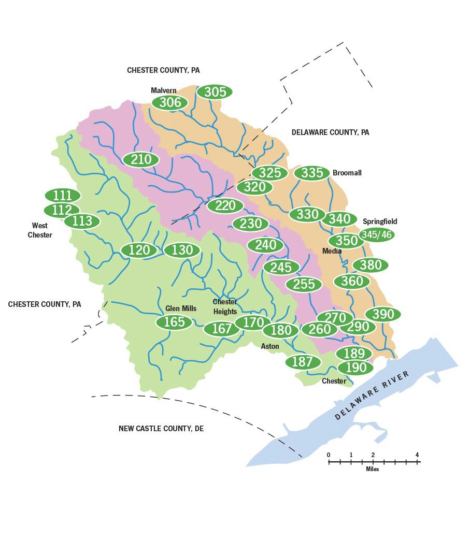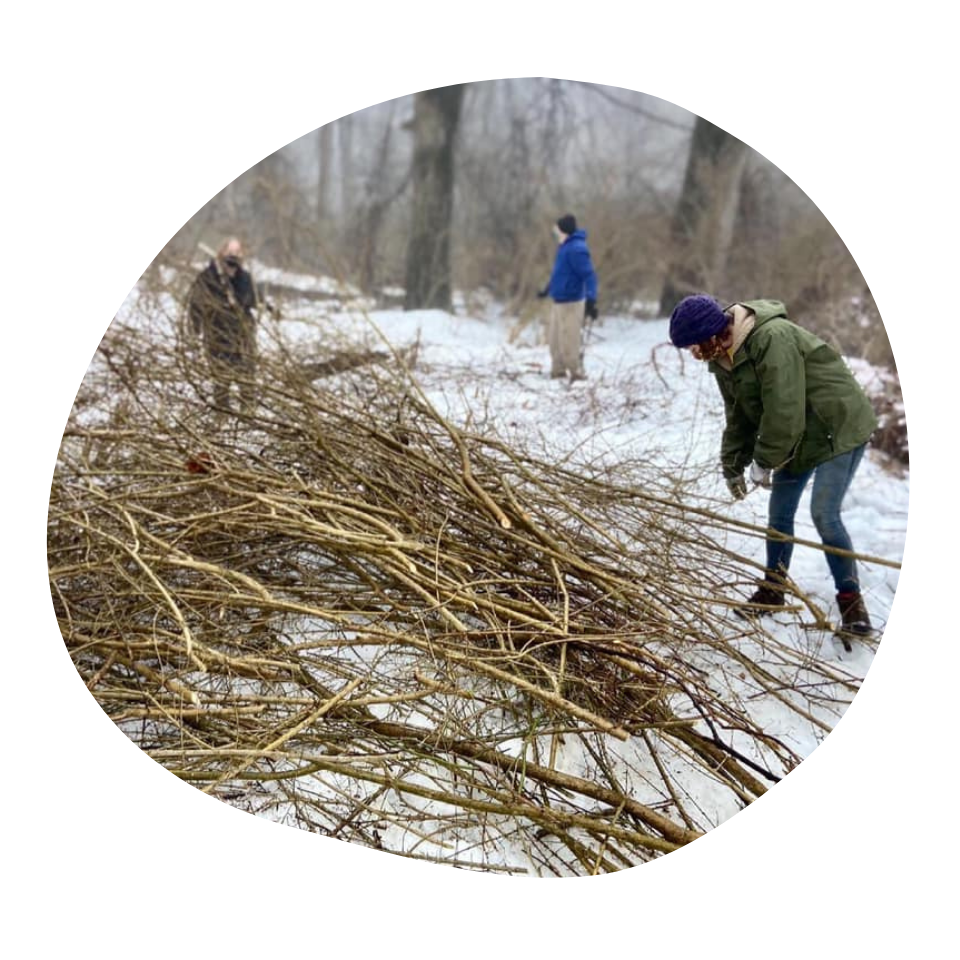Winter in our Watersheds
by David Hilbert
In the winter, it's worth noting a geographic particularity of the Delaware Valley, where our forests have almost no evergreen vegetation whatsoever. This stems largely from the narrow climactic range we find ourselves in; forests to the south have enough days of temperatures above freezing that the plants which keep leaves all winter can keep photosynthesizing with access to liquid water, while forests to the north benefit from persistent snowpack that keeps liquid water accessible for conifer roots just beneath the first few inches of soil.
Keeping leaves/needles all winter comes with a risk, though - if the sun shines brightly while the ground is frozen solid, plants can suffer from desiccation as they rapidly run out of liquid water to assist in the photo-synthetic process. By and large, the trees and shrubs of the Delaware Valley don't take these risks, and those few plants that do – such as Mountain Laurel - are often on north-facing slopes, minimizing winter sun exposure.

Planning for Spring
Over the winter months, Volunteer Coordinator Lynn Meza begins the months of work it takes to pull off CRC’s multi-site Streams Cleanup. Many people probably don't realize how much prep goes into our Cleanup planning. The magic of the Annual Streams Cleanup is in the numbers: on one spring day approximately 800 volunteers cleanup over 30 sites and pull out over 10 tons of trash from the streams. But that magic is really the fruition of many months of work by the CRC Streams Cleanup Committee.
The Streams Cleanup Committee, comprised of Lynn, CRC Board Members Chris Townend, and Lisa Gaffney, and Site Coordinators Sue Bruegel and Russ Johnson, convene as early as October to start strategizing the spring event. They discuss goals and improvements, including potential new sites, any refinements to make to the process and to consider the Site Coordinators' feedback from the previous year's event. The next months are spent communicating with Site Coordinators, and recruiting new ones as needed.
Streams Cleanup committee members also work on vetting new sites. In January, Lynn starts sending information to the Site Coordinators to assist them in their site planning. Volunteer registration opens about one month before the event (about mid-February). Once registration opens, CRC ensures that every site is adequately staffed with volunteers. Lynn makes sure all Site Coordinators get their supplies the week before the event. The Cleanup happens right about the end of official winter.
CRC Begins Renewed Focus on City of Chester
Chester’s industrial past and ongoing socioeconomic deprivation present unique challenges for conservation management. Industrial uses marginalized recreational and natural uses and created ongoing issues with water and soil quality, while a lack of investment in recreational and natural environments within the city means that our planting parcels suffer from decaying infrastructure, a maintenance backlog, and a subsequent decline in neighbors’ awareness of the parks’ offerings. CRC’s plantings have sought to partially alleviate this marginalization and lack of investment.

The removal of invasive species, their replacement with more classically attractive as well as wildlife-friendly species, and the concurrent picking up of trash and debris increase the aesthetic value of our parcels and serve as a visual indicator of CRC’s commitment to improving park access in the lower watersheds, as well as accelerating the return of a healthier post-industrial local ecology.

